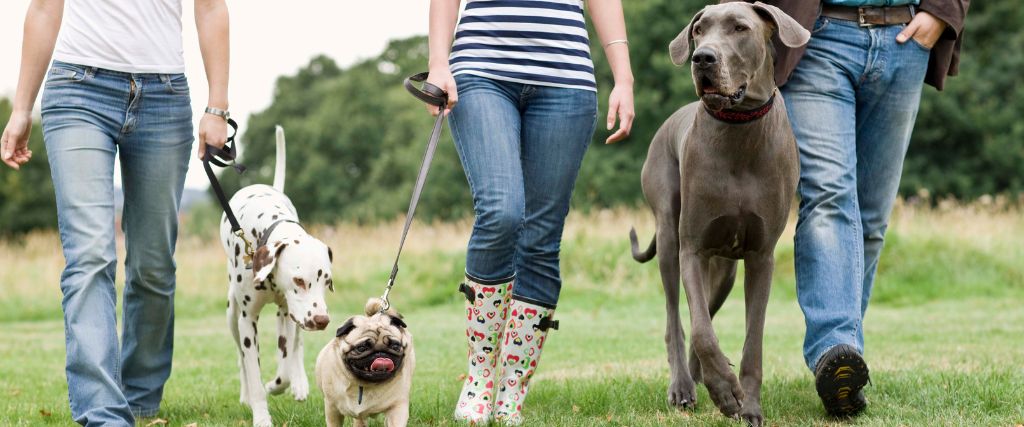Picture this: You, your pup, and the great outdoors—all ingredients for a perfect, stress-free walk, right? Ah, if only it were that simple! For some of us, especially new pet parents or those who've yet to master the art of leash training, walks can feel more like a tug-of-war match than a relaxing outing. But worry not because National Walk Your Dog Week is just around the corner! It's the perfect time to sharpen those leash skills and transform your furry pal into the ultimate walking buddy. So, let's dive into some tail-wagging tips to make your next dog walk a walk in the park!
From Zero to Hero: The Art of Practice Walks
“Wait, I have to practice walking my dog?" Yep, you read that right! While it may sound a bit odd at first, training your pooch to be the world's best walking buddy does take some dedicated practice time. Start off in a quiet area with fewer distractions—think of it as the "bunny slope" for dog walking. As you and your pup get the hang of it, you'll feel more confident to tackle longer walks, bustling parks, or even dog-friendly trails.

Deck Out Your Dog: The Importance of Proper Gear
Choosing the right gear is a big deal, kind of like finding the perfect pair of running shoes. A well-fitting collar should allow enough room for you to slip two fingers underneath but should not be loose enough to go over your dog's head. As for leashes, aim for one that's no longer than six feet. Got a dog that pulls like they're in the Iditarod? Consider a front-pull harness as part of your training toolkit. The ultimate goal? Achieving the glorious "loose-leash walk," where your arm stays close to your body and the leash remains slack.
Snacks and Squeaks: The Magic of Positive Reinforcement
Treats are a great way to train your dog to have good walking manners. Using treats is positive reinforcement, and training dogs with these incentives helps them to learn quickly and they will remember longer. Get creative with a plastic pastry bag filled with dog-friendly wet food or peanut butter. Not into snacks? A squeaky toy or a favorite ball can work wonders, too.
Here's the game plan:
- Hold the leash in one hand and your reinforcement of choice (treats or toy) in the other.
- Start with your dog sitting next to you.
- Take a step and say "come" or "here" to signal that it's time to walk.
- Keep your dog's attention on you by either squeaking the toy or letting them sniff the treat as you walk.
- After a few steps, reward them with the treat or toy, accompanied by a cheerful "good" or "yes."
- Keep practicing, gradually extending the distance between treats or squeaks.
Reward the Love, Not the Tug
Is your dog pulling you towards the squirrel or the fire hydrant?
Here's the pro tip: the minute your doggie diverts their attention, freeze! Snap your fingers, tap your leg, or squeak their favorite toy—whatever it takes to get their four-legged focus back on you. Once you've got their attention, pivot and head the other way while encouraging them to follow you with a cheerful "come!" After a few more steps, it's treat time! And remember, gentle on the leash, friends. You want them to choose to stroll by your side, and for that, they get the yummy or squeaky reward. Consistency is your new BFF in this journey. If you let your dog start to pull, it will take longer to fix than if you teach them this method from the very beginning.
Commitment to Dog Walking Training is Key
Commit to 30 minutes a day of this training exercise. That’s nothing in the grand scheme of things! You can even split it into 15-minute walks twice a day. You’ll reap the benefits of remaining faithful and committed to the process.

What to Avoid Doing When Walking Your Dog
In the end, a dog that enjoys walking with you will be easier to train so it’s important to make the process enjoyable for them.
The American Kennel Club offers the following three things to avoid when teaching your dog good walking skills:
1. Don’t Rush the Pee Pee Part
Slow Down on the Pee Breaks: Yes, it might seem like your dog is taking forever to find that "perfect spot," but there's science behind the sniffing. Think of it as pee-mail for your pooch; they're communicating with other dogs and checking their "messages" too! As the AKC article notes, “It’s not just about relieving themselves, it’s about communicating with the world-at-large. Dogs use their urine to signal their presence to other dogs. And in turn, smelling other dogs’ urine tells a dog all about the other canines in the community, including their gender, age, and health.”
2. Don’t Rush the Nose
Just as with the first tip, it’s all about the process for dogs. Similar to finding just the right pee spot, dogs like to linger where there are other dog smells, and we know this can be frustrating at times. However, rushing them by pulling or yelling “heel” detracts from their enjoyment and, in turn, could make them impolite walkers. Dogs have hundreds of millions of scent receptors in their noses, so stop and let them smell their version of roses!
3. Avoid the Tug-of-War
Remember, pulling on the leash is a big no-no. It's not just counterproductive but can also cause physical harm, especially for our petite pups. Dogs will naturally pull back due to instinct, and this not only detracts from their training process but it can also hurt your dog’s trachea!
Once you’ve dedicated the time to follow the tips we’ve offered while avoiding the tendency to pull and rush, you and your dog will be wonderful walking partners.
Don't have a vet in your area yet? We can help you find a local veterinarian.
If you have more questions the GeniusVets Telehealth platform will give you unlimited access to text and/or video calls with board-certified veterinarians! To learn more click here.


The Ultimate Guide
to Dog Care
This free guide is an indispensable manual for dog ownership. Filled with veterinary advice and recommendations on every important topic at each stage of your dog’s life, this is all the stuff that responsible dog owners need to know. That is why we are making it free!
